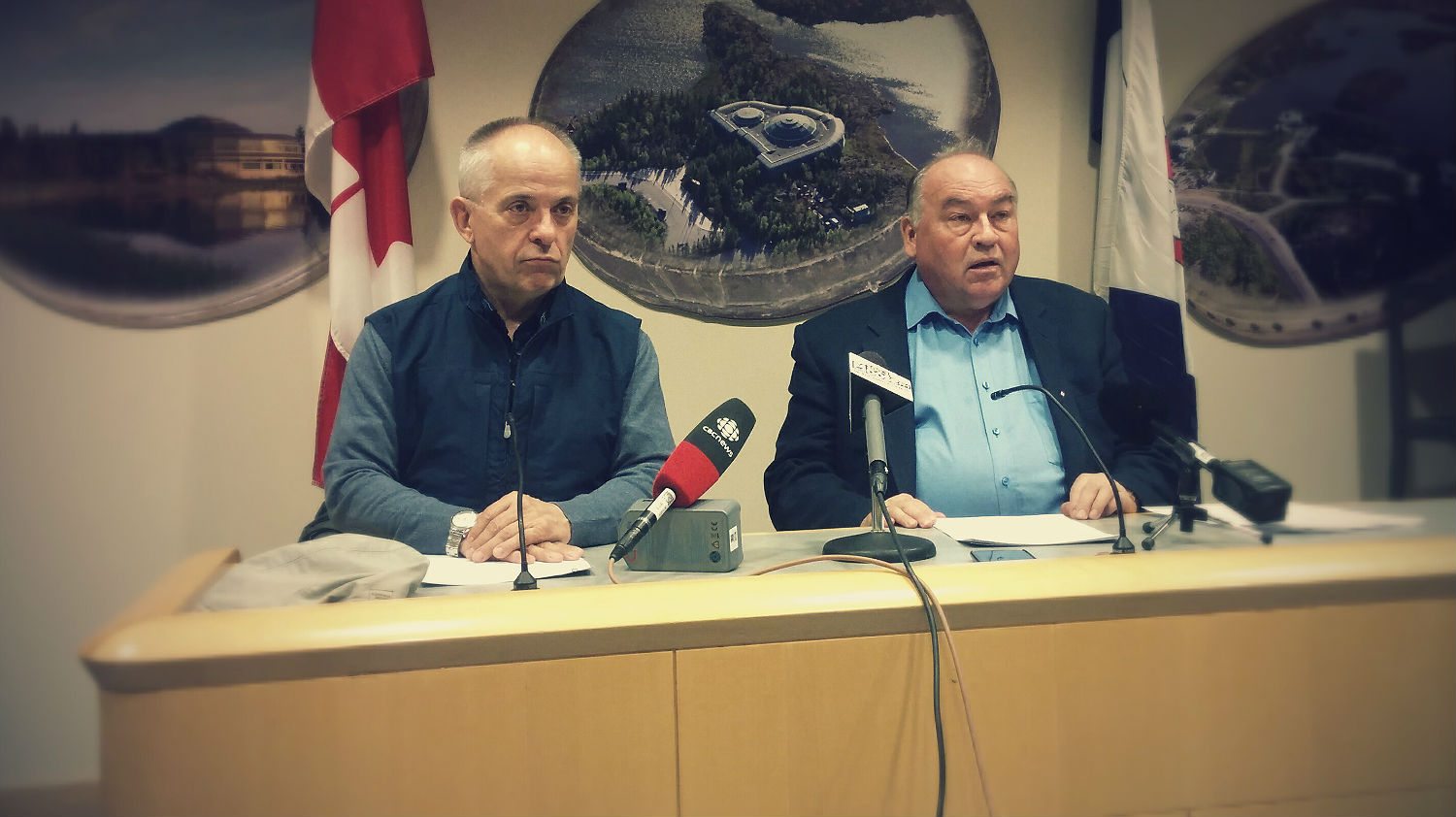The territorial government believes Tuesday’s federal budget has given the NWT “the tools and ability to manage our own affairs”.
Those were the words of territorial finance minister Michael Miltenberger, addressing reporters alongside Premier Bob McLeod on Wednesday.
The budget proposed raising the NWT’s borrowing limit by $500 million, to $1.3 billion – short of the billion-dollar increase the NWT had wanted, but a sizeable move nonetheless.
The territory wants the money for large-scale infrastructure projects, like the Mackenzie Valley Highway, which are designed to stimulate the economy.
Read: Feds raise NWT borrowing limit by $500 million in 2015 budget
The federal budget contained few other pledges of note for northern Canadians.
But Miltenberger and McLeod highlighted a separate regulatory development they believe is even better news for the territory.
It’s boring, but important: soon, the NWT could be allowed to exclude some debts from its new, bigger borrowing limit.
Specifically, the federal government may be about to let the NWT ignore debt “that pays for itself” when calculating how much money it has borrowed.
Miltenberger gave reporters an example on Wednesday.
“It will allow us to take $200 million of Northwest Territories Power Corporation debt that is self-financing and not have it count against our borrowing limit,” he said, referencing long-term loans to the power corporation that, in turn, generate revenue used to pay off those initial debts.
“It will [also] allow us to look at big projects, like the all-weather road to MacKay Lake. If we work a deal with industry that will help us make [the road] self-financing, we can do that and not have it go against our borrowing limit. That way we can use our borrowing limit to do other things.
“When you look at those two pieces, over time they will give us a better deal than if we just had a billion dollars.”
The NTPC’s $200 million debt is one of several the territorial government hopes to exclude from its debt limit if the regulatory change goes ahead.
Read: NWT announces study into Arctic oil pipeline, roads
The Premier said the territory’s new spending power demonstrated the federal government’s faith in his cabinet’s ability to control its own affairs.
“It is recognition that mature governments must have fiscal flexibility so they can carry out effective planning for the future and better manage the territorial economy,” said McLeod.
Miltenberger added: “When we went to Ottawa, we said what we want are the tools and ability to manage our own affairs. We’re not asking for millions and billions of dollars, we can manage that.
“They’ve given us the tools we have asked for.”
Regarding concerns about the territory shouldering an additional debt burden, McLeod rubbished critics’ comparisons with credit card spending.
“An increased borrowing limit is not an invitation to begin spending without a solid fiscal plan. We are not running up the credit card bills to pay for consumer goods,” said the Premier.
“Like a home improvement loan, we are talking about potential borrowing to make investments that will increase the value of our economy and our territory.”
Miltenberger said “risk management”, by taking on debt to invest in the economy, was the government’s job.
“We need to take risks,” he told Moose FM. “You don’t build the territory by not having a forward-looking vision and being prepared to take calculated, carefully measured risks to get it done.”
Miltenberger said he is prepared for the ‘abuse’ that comes with those risks – pointing to the Deh Cho Bridge project, completed in 2012 at a cost of more than $200 million.
Though the bridge cost far in excess of its initial budget, Miltenberger said the project exemplified a risk that had paid off.
“We took enormous abuse on the bridge. Now, nobody would go back to the old ways,” he said. “Would you prefer to have ferries, ice roads and six weeks in the spring and fall when you can’t get in and out, and your prices go up?
“Would the people in Inuvik and Tuk prefer not to have a road?
“The answer, resoundingly, would be absolutely they want those opportunities. Those are good risks for a government to take.”





